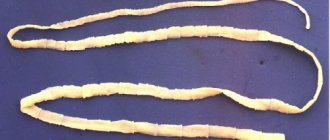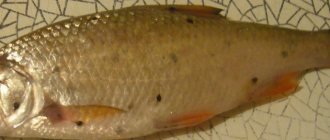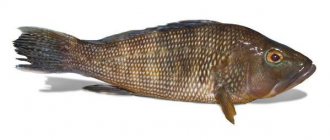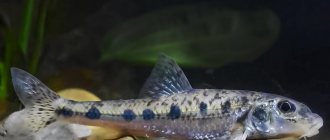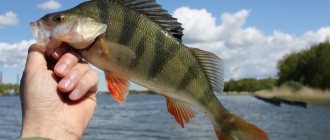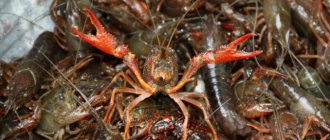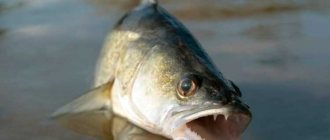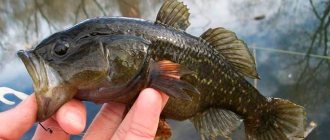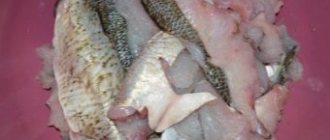What parasites found in fish are especially dangerous for humans?
According to Rospotrebnadzor, the most common diseases caused by parasites are opisthorchiasis, clonorchiasis, diphyllobothriasis, and anisacidosis.
As Doctor of Technical Sciences, Deputy Director for Scientific Work of the All-Russian Research Institute of Fisheries and Oceanography Elena Kharenko , fish that live in freshwater bodies can most often encounter parasites such as broad tapeworm (one of the types of tapeworms) and opisthorchis (parasitic flatworm). According to Kharenko, in Russia, most helminthiases are registered in Siberia and the Far East. Infection occurs due to the fact that residents of these regions eat fish they catch themselves, as well as fish products manufactured with violations.
Which fish are healthy and which are harmful? Infographics Read more
But residents of all regions are not immune from encounters with tiny enemies. Some parasites can cause serious illness in humans. For example, opyrstochis (opisthorchia) - flatworms that infect the liver and bile ducts - often live in river fish. A person can become infected by eating fish from the carp family. These are ide, bream, dace, tench, asp, roach, bleak, rudd, minnow, podust, etc.
Another dangerous disease, anisakidosis, is caused by nematode larvae from the Anisakidae family. In an infected person, the gastrointestinal tract is affected, and ulcers of the walls of the stomach or small intestine may develop.
Another disease caused by parasites is diphyllobothriasis. This is a helminthiasis caused by a tapeworm (broad tapeworm). The disease affects the gastrointestinal tract and is often accompanied by anemia. A person can become infected with this parasite from pike perch, pike, burbot, perch, ruffe and other river fish. Larvae can also be found in marine fish species: chum salmon, Pacific salmon, pink salmon, etc.
The pulmonary fluke can cause paragonimiasis. This disease affects the lungs, muscles, and sometimes the brain. The disease occurs when eating crayfish and crabs that have not undergone sufficient heat treatment.
Article on the topic
Parasite under the skin. Why shouldn't you walk barefoot on the ground?
Parasites in river fish
Parasites in river fish that are dangerous to humans, when they enter the body, can provoke various types of helminthiasis, which, if left untreated, lead to the development of all kinds of complications. Such pathogens are:
- Siberian fluke, which causes opisthorchiasis . The intermediate host of the worm is fish from the carp family. In the human body, the parasite infects the liver or gall bladder. Two to three weeks after infection, the following symptoms are observed: general fatigue, headache, nausea, vomiting, fever (38-40°), pain under the ribs on the right side.
- Chinese fluke is a white flatworm in fish caught in the Amur basin . The symptoms of the disease are the same as those of opisthorchiasis.
- Broad tapeworm, which provokes diphyllobothriasis, is transmitted to the human body by consuming infected crucian carp, perch, ruffe, and pike . The disease is manifested by loss of appetite, nausea and vomiting, heartburn, rumbling in the stomach, headache, unstable stool, and sometimes itching and rash.
The wide tapeworm in the human body can grow up to 12 meters in length and lives in the body for more than 20 years
- Trematode Metagonimus yokogawai.
How can you tell if a fish is infected or not?
As a rule, parasites (except for the largest ones) cannot be seen with the naked eye. As Candidate of Biological Sciences, senior researcher Ilya Gordeev explains, you can see, for example, some nematodes. They can be recognized by their worm-like shape and characteristic movements.
Nematode larvae - anisakids - can be present in 20 families of commercial marine fish, crustaceans and mollusks. Among them are notothenia, mackerel, tuna, sardine, chum salmon, pink salmon, herring, cod, herring, horse mackerel, haddock, sea bass, flounder, sabrefish, squid, octopus, shrimp, and shellfish. In the body of the fish, these parasites can be seen in the shape of a flat spiral.
Fish for a million. 8 most expensive products in the world Read more
What are the symptoms of infection and how to avoid it?
A person becomes infected if he eats raw or insufficiently heat-treated fish that contains live larvae. The incubation period after infection with parasites can last from one to two weeks. As a rule, in an infected person, symptoms manifest themselves in the form of eating disorders, deterioration of general condition and loss of body weight. In this case, clinical signs may be absent for a long time or have uncharacteristic manifestations. Very often the clinical picture is similar in symptoms to diseases of the gastrointestinal tract, such as gastritis or pancreatitis.
To avoid infection, you should not buy fish from unauthorized retail outlets. In addition, before eating, the fish must be thoroughly fried, boiled and salted. Ideally, you should avoid lightly salted, raw, dried, slightly poached fish. It is better to buy it from enterprises where there is control over compliance with sanitary rules. When cutting fresh fish or crayfish at home, you should use separate utensils and a knife. After finishing cutting, be sure to treat them with disinfectant detergents.
Article on the topic
Summer "surprise". How can you easily get poisoned during the warm season?
What is wrong with sea fish?
Sea inhabitants who do not leave salty areas are less susceptible to helminthiasis.
The life of some fish species takes place both in rivers and in the depths of the sea (salmon, muksun), which is important for the development of helminthiasis; for example, opisthorchiasis can affect not only river fish, but also sea fish that periodically enter freshwater bodies of water.
Opisthorchiasis
This helminthiasis affects the bile ducts of the liver and pancreas and is caused by opisthorchia or liver flukes, which are transmitted to a person by eating insufficiently heat-treated fish from the carp family and can live in his body for up to 20-30 years. Potential carriers of the helminth are ide, dace, roach, crucian carp, bluefish, and saberfish. Such fish sometimes contain a lot of parasites, so the catch must be thermally processed or frozen at a temperature of at least minus 15 degrees. Among predators, liver flukes are less common, but pike and perch can also have parasites. The largest distribution of opisthorchiasis is in the rivers of Western Siberia. The disease has a chronic course and disguises itself as other pathologies. Symptoms characteristic of damage to the liver and biliary tract are perceived as cholecystitis, pancreatitis, gastroduodenitis. The most severe consequences are the development of cirrhosis and liver cancer.
It will also be interesting: What you need to know about teniarynchosis: infection, symptoms, treatment
Anisokidosis
This disease is found throughout the entire post-Soviet space and is caused by roundworms that resemble roundworms, but are smaller in size. Eggs from bodies of water contaminated with feces are swallowed by small crustaceans, which are then eaten by squid, lobsters, and crabs. Marine mammals, predatory fish (cod, perch, salmon) and birds can become the definitive hosts if they eat infected shellfish.
In the human body, the larvae penetrate into the mucous and submucosal layer throughout the gastrointestinal tract, causing symptoms of inflammation and toxic-allergic reactions. Sometimes complications such as intestinal obstruction, obstruction of the biliary tract, or perforation of the intestinal wall are possible. In the human body, these parasites do not develop to mature stages; they live on average 2-3 months. People run the risk of becoming infected when consuming lightly salted herring, as well as salmon sushi.
How to properly process fish to avoid infection?
In accordance with SanPiN 3.2.3215-14 “Prevention of parasitic diseases on the territory of the Russian Federation,” fish and fish products can be disinfected by freezing, salting and heat treatment.
To destroy nematode larvae, fish must be frozen for 24 hours at a temperature of -20 degrees. On average, the temperature in the freezer of a regular refrigerator is only -18 degrees. In this case, it will take longer to freeze the helminths: 10-14 days.
Trematode larvae (in particular, opisthorchids) die at a temperature of -28 degrees, and the fish must be frozen for at least 32 hours. At a similar temperature, cystode larvae are also destroyed: freezing should last for 72 hours.
In addition, you can disinfect fish in boiling water; to do this, you need to cook it for 20 minutes after boiling, crayfish - 15-20 minutes. You can salt fish weighing up to 2 kg. To do this, add 20% salt to the weight of the fish and salt it for 7 to 14 days.
Parasites in fish that are dangerous to humans: photos and names of fish parasites
Fishing is a rather exciting activity that was invented by man. Of course, fishing is a great way to spend your free time, relaxing in nature in silence.
Of course, such an exciting activity has another side to the coin, one might say, quite problematic. Many fishermen know that fish contain various parasites.
When faced with them during the cutting process, people, having discovered large larvae or even worms, throw it away. And at the same time, they don’t even realize that some parasites in fish do not pose a danger to human health.
Worms in fish are able to penetrate any of its organs - it can be the liver, intestines, mouth, gills. Parasites enter the human body when raw, lightly salted or thermally poorly processed fish meat is consumed.
It is known that there are thousands of species of helminths, some of them pose a serious threat to human life, while others turn out to be completely harmless.
In this regard, it is necessary to understand which fish parasites are dangerous and which are not? What can be found in cod, bream, grayling, omul, pike, mackerel, sterlet, tuna, hake and cod liver and in burbot organs? And also find out whether it is possible to eat contaminated fish or not?
Which parasites are harmless?
It is worth saying right away that small types of parasitic microorganisms pose a serious threat. Typically, amateur fishermen who are not only interested in fishing, but also know a lot about it, do not throw away tasty and tender meat of red fish (char) or river fish (rudd, pike), but use certain skills without damaging their refrigerator.
Almost all river fish (with the exception of sterlet) contain various parasites, which can be removed mechanically and then the fish can be thermally treated. By the way, in practice, most often these are worms in herring. But larvae and worms are extremely rare in sterlet, so you can even eat it raw!
There is a certain group of parasitic worms that cause significant harm to fish, but they are not dangerous to humans, and he cannot become infected by eating fish. Types of parasitic worms that are not dangerous to humans:
- Worms.
- Schistocephamos.
- Trienophorus nodulosus.
- Philometra (as in the photo).
Helminths in fish meat are quite common. As a rule, in the vast majority of cases it is the cyprinid family that is infected – rudd and bream. A parasitic individual called ligula (as in the photo) poses a serious danger.
The larvae, penetrating into the fish, begin to become active, then their shell dissolves, and the life cycle of the worm begins. Over time, the ligula turns into an adult, and can reach 15 centimeters in length while in the bream.
When the parasite enters the human body, it provokes a failure of metabolic processes, which leads to serious illness and serious complications in the future. Features of preparing this fish:
- If a ligula was found inside the fish, this does not mean that it needs to be disposed of immediately. Despite the danger of such a parasite for humans, with the proper skill, food can be preserved.
- It is necessary to clean the bream from the entrails, which will also remove the parasitic helminth.
- Rinse the fish under running water or in some container, and it is ready to eat.
It is worth noting that despite the fact that bream contains parasite larvae, they do not penetrate the meat of the fish, so it can be eaten. Many people are interested in whether it is possible to eat cleaned fish, but raw? Here the answer is clear, no, since bream may contain small parasites that are not visible to the human eye.
Cystidicola pharyonis (as in the photo) are parasitic microorganisms that are most often observed in fish meat in winter and summer. The worm and its larvae live in the swim bladder; the parasite is a thin and long thread, whitish in color.
This helminth does not pose a danger to human health. However, before consuming the food product, it is necessary to get rid of all the entrails.
Trienophorus nodulosus, Philometra
In the liver of burbot, small white formations similar to balls are often found. If they are damaged, you can see how a flat helminth appears from there (as in the photo).
Such fish helminths in the liver of burbot can reach a length of up to 15 centimeters. Infected burbot fish meat can be eaten, only before doing this it is necessary to clean the insides, be sure to remove the liver, rinse well under running water, not forgetting about the required cooking before eating burbot.
Fish that was caught in freshwater bodies may contain phylometra - a parasitic worm, its length is 10-12 centimeters. Features of the helminth:
- It is located under the scales, sometimes the parasite “hides” in the fin area.
- The helminth is a very thin vein, similar to a thread.
- Crayfish act as an intermediate host for this type of parasite; without their participation, the helminth is not transmitted.
You can eat contaminated fish caught in freshwater bodies. However, it is always worth remembering the rule that the entrails must be thrown away (preferably buried), the fish meat must be washed thoroughly, and fried over the fire for at least 20 minutes.
In crucian carp there are parasites that look like ligula, only they are shorter, and they are called digrams (as in the photo). Typically, such parasitic worms and their larvae are found in red fish - trout, salmon, char.
However, they are completely safe for the body, so after removing them from the fish, you can eat it even slightly dried.
Eustrongylides live in perch, but they are not dangerous to humans. The larvae are thread-like and white or transparent.
Parasites living in perch negatively affect only its internal organs, and when removed from the fish, the meat can be eaten.
What parasites should you be wary of?
The greatest danger to humans is represented by small but sexually mature individuals, the length of which varies from 2 to 5 millimeters. In this case, it is very important to quickly determine the presence of parasites in fish meat in order to exclude subsequent infection when consuming the product. Parasitic individuals that are dangerous to the human body:
- Diphyllobothrium latum.
- Diphyllobothrium dendriticum.
Diphyllobothrium latum is predominantly found in the eggs and gills of fish. And, if there is contaminated meat, then a person can get an infection. As a rule, such a worm occurs in the organs of burbot and pike, and sometimes char is also infected.
If the larva enters the human body, it eventually turns into a sexually mature individual, which grows throughout its entire life cycle. Based on medical practice, we can say that the length of the helminth can reach up to 50 meters. In addition, there have been cases where the worm lived in the human body for many years, causing numerous diseases.
Diphyllobothrium dendriticum is found only in open water bodies on the territory of the Russian Federation. Larvae were found in caviar and liver. If the worm penetrates the human body, it can grow to an impressive size - more than one meter.
The life cycle of the parasite is six months, but during this time, it can seriously worsen a person’s health, disrupting the full functioning of internal organs and systems. As a rule, the patient is diagnosed with numerous diseases, complicated by serious consequences if there is no immediate treatment.
You will be surprised how many parasites will come out if you drink a glass of regular...
Parasites will leave the body in 3 days! You just need to drink on an empty stomach...
Seafood and squid are believed to be safe for the human body and do not contain larvae. In reality, everything is not like that at all:
- Larvae and helminths can live in seafood and squid.
- The worms in squid belong to the group of nematodes, and can cause various diseases, for example, anisacidosis.
You can become infected from squid only if the food product has been insufficiently cooked.
Fish and helminths
Herring and mackerel contain parasites that can cause diseases such as ligulosis, anisakiasis, and opisthorchiasis.
Ligulosis is a disease caused by tape parasites that reach up to 1 meter in length. The complexity of the disease lies in the fact that the worm is constantly growing, causing compression of internal organs and releasing toxic substances that poison the human body.
Ligulosis is characterized by the following symptoms:
- Dizziness.
- Headache.
- Feverish condition.
- Increased body temperature.
- Nausea.
- Disorders of the digestive tract.
If larvae similar to tape-type parasites are found in the fish, this product must be disposed of. Many people wonder if heat treatment will help? No, it won’t help, it will simply reduce the likelihood of infection.
It often happens that if you buy a jar of cod liver, you can find thin and long veins of worms in it. Undoubtedly, the vast majority of consumers get rid of cod liver, because few people know that worms in the liver are normal.
According to sanitary and hygienic standards, a small amount of worms in cod liver is acceptable, so you can safely eat it, it will not have a negative impact on health, and infected cod liver will not cause harm to humans.
What other fish have parasites?
- In mackerel, larvae of roundworms are observed, which are localized in the liver, kidneys, and intestines. Worms, penetrating into the human body, move the intestines, disrupt its functioning, and can lead to the formation of ulcers and tumors.
- As numerous studies show, tuna is the most harmless fish to eat; it almost never contains parasites.
- Baikal omul is not only a delicacy, but also a danger to humans. The omul may contain gull tapeworm.
- A serious threat is posed by the omul, which contains solid capsules containing the embryo of the parasite. When an infected omul gets inside a person, the probability of infection approaches 100%.
- The burbot liver may also contain gull tapeworm. Parasitic microorganisms are not found very often in cod; as a rule, tapeworm larvae are found in cod and even in rare cases in tuna.
Flounder belongs to the flounder family. Many people claim that flounder is the safest fish and can even be eaten raw. But no, in reality it's the other way around. If you eat fish raw, you can become infected with worm larvae, which are similar to roundworms, but slightly smaller in size.
These worms parasitize the human gastrointestinal tract, causing stomach and intestinal diseases. When flounder contains helminths, only thorough cooking or freezing will help get rid of them. The ideal option is for the flounder to sit in the freezer for 7 days.
In any case, if a person discovers helminths in fish (burbot liver, char, cod, pike, bream), it is necessary to carefully remove all the insides, rinse it with water, and then heat it for at least 20 minutes. This rule does not apply only to cod liver, which is sold in canned form.
If serious doubts arise at all, and a person wonders whether it is possible to eat such fish or not, it is better to refuse to eat it. Because at best you can get poisoned, and at worst you can end up on the operating table. The video in this article will show a kind of TOP parasites. who kill a person.

